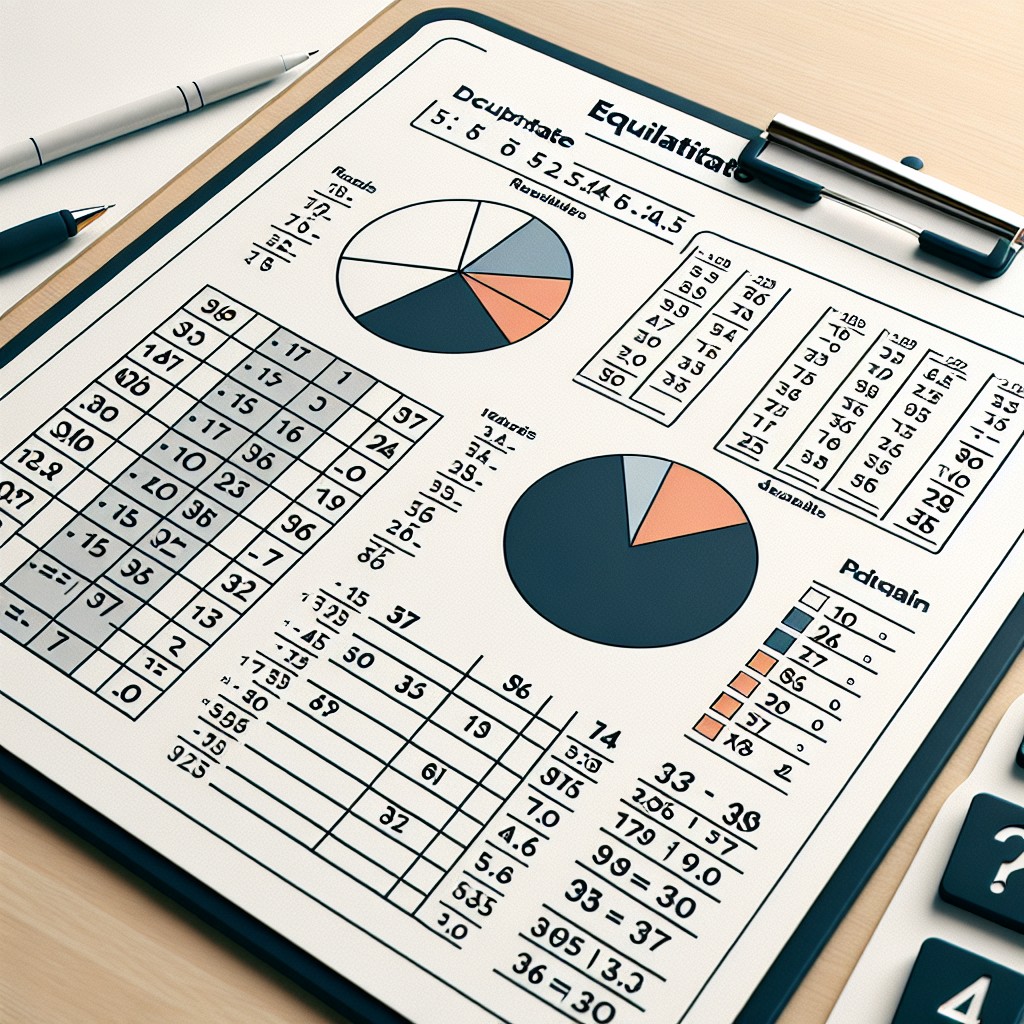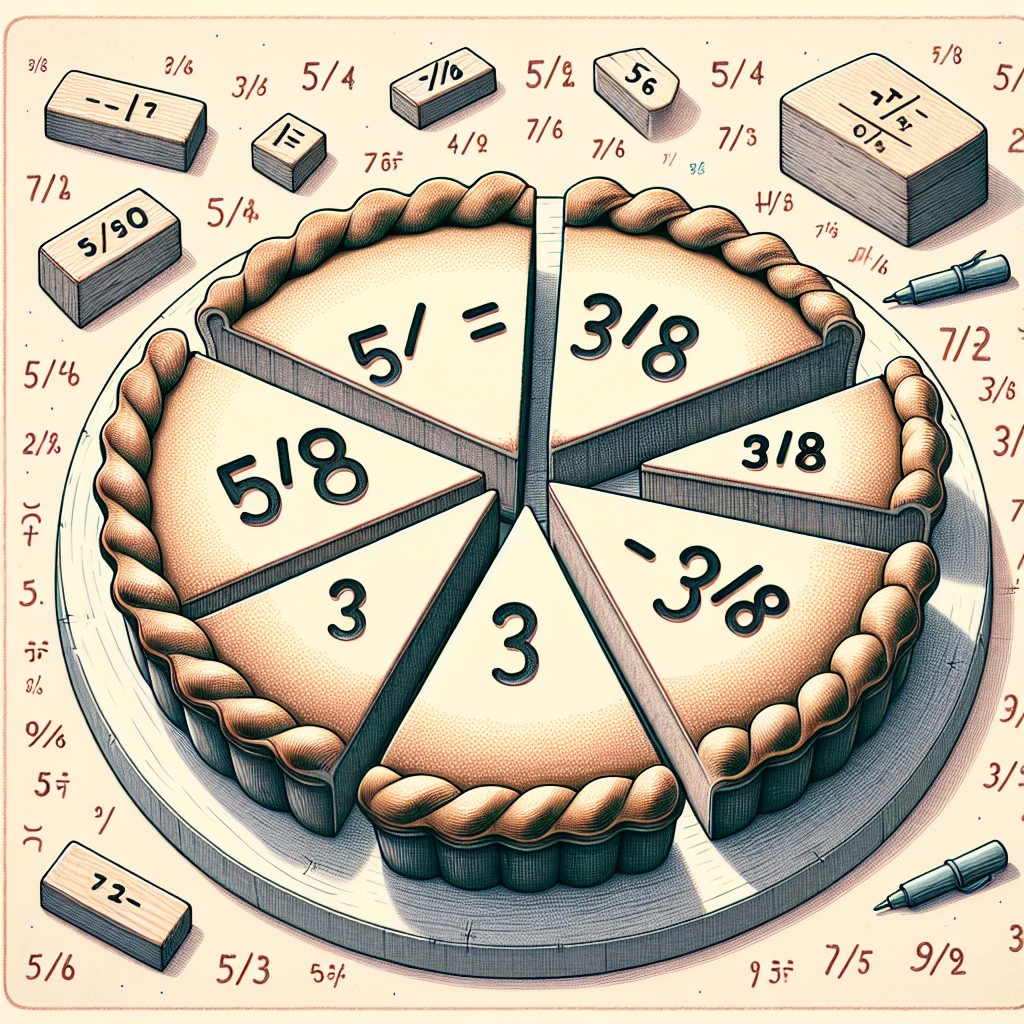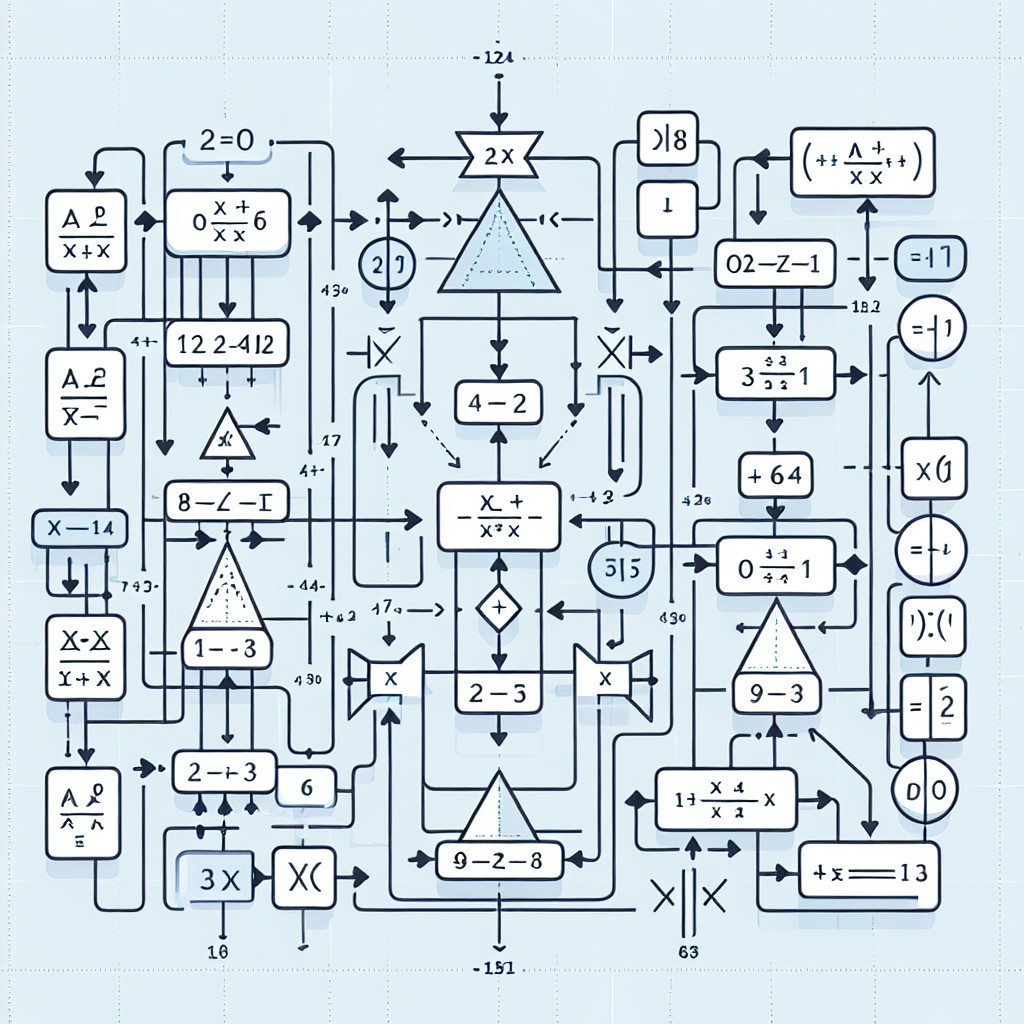
Equivalent fractions and decimal numbers are fundamental concepts in mathematics that are essential for understanding and solving various mathematical problems. Equivalent fractions are fractions that represent the same value, but have different numerators and denominators. Decimal numbers, on the other hand, are a way of representing fractions or parts of a whole using the base-10 numbering system. Understanding equivalent fractions and decimal numbers is crucial for performing operations such as addition, subtraction, multiplication, and division, as well as for comparing and simplifying fractions and decimal numbers.
Summary
- Equivalent fractions have the same value but different numerators and denominators.
- Decimal numbers are a way of representing fractions as a whole number and a decimal fraction.
- To convert a fraction to a decimal, divide the numerator by the denominator.
- Simplifying a fraction means dividing both the numerator and denominator by their greatest common factor.
- Comparing fractions and decimals requires converting them to a common form.
Understanding Equivalent Fractions and Decimal Numbers
Equivalent fractions are fractions that have different numerators and denominators but represent the same value. For example, 1/2 and 2/4 are equivalent fractions because they both represent half of a whole. Similarly, decimal numbers are a way of representing fractions or parts of a whole using the base-10 numbering system. For example, 0.5 is equivalent to 1/2 because they both represent half of a whole.
How to Convert Fractions to Decimal Numbers
Converting fractions to decimal numbers involves dividing the numerator by the denominator. To convert a fraction to a decimal number, follow these steps:
1. Divide the numerator by the denominator.
2. If the division is exact, the result is a terminating decimal.
3. If the division is not exact, continue dividing until you reach a repeating pattern or decide to round off the decimal.
For example, to convert 3/4 to a decimal number:
1. Divide 3 by 4: 3 ÷ 4 = 0.75
2. The division is exact, so the result is a terminating decimal.
Finding Equivalent Fractions and Decimal Numbers
There are several methods for finding equivalent fractions and decimal numbers. One method is to multiply or divide both the numerator and denominator of a fraction by the same number to obtain an equivalent fraction. For example, to find an equivalent fraction to 1/2, you can multiply both the numerator and denominator by 2 to get 2/4.
To find an equivalent decimal number, you can multiply or divide the original decimal number by a power of 10. For example, to find an equivalent decimal number to 0.5, you can multiply it by 10 to get 5.
Simplifying Fractions and Decimal Numbers
Simplifying fractions involves finding the greatest common divisor (GCD) of the numerator and denominator and dividing both by the GCD. For example, to simplify 4/8, you can divide both the numerator and denominator by 4 to get 1/2.
Simplifying decimal numbers involves rounding off the decimal to a certain number of decimal places or using scientific notation. For example, to simplify 0.6666…, you can round it off to 0.67 or express it as 6.67 x 10^-1 in scientific notation.
Comparing Equivalent Fractions and Decimal Numbers
To compare equivalent fractions, you can cross-multiply and compare the products. For example, to compare 1/2 and 2/4, you can cross-multiply: 1 x 4 = 4 and 2 x 2 = 4. Since both products are equal, the fractions are equivalent.
To compare decimal numbers, you can compare the digits from left to right. For example, to compare 0.5 and 0.75, you can compare the tenths place: 5 is less than 7, so 0.5 is less than 0.75.
Using Equivalent Fractions and Decimal Numbers in Real Life Situations
Equivalent fractions and decimal numbers are used in various real-life situations such as cooking, shopping, and measuring. For example, when following a recipe, you may need to convert fractions to decimal numbers to adjust the measurements. When shopping, you may need to compare prices using decimal numbers. When measuring, you may need to convert between different units using equivalent fractions or decimal numbers.
Adding and Subtracting Equivalent Fractions and Decimal Numbers
To add or subtract equivalent fractions, the denominators must be the same. If the denominators are different, you need to find a common denominator by finding the least common multiple (LCM) of the denominators. Once you have a common denominator, you can add or subtract the numerators and keep the denominator the same.
To add or subtract decimal numbers, align the decimal points and add or subtract the digits from right to left. If necessary, carry over or borrow from adjacent digits.
Multiplying and Dividing Equivalent Fractions and Decimal Numbers
To multiply equivalent fractions, multiply the numerators together and multiply the denominators together. For example, to multiply 1/2 and 2/3, multiply 1 x 2 = 2 and 2 x 3 = 6, so the product is 2/6.
To divide equivalent fractions, multiply the first fraction by the reciprocal of the second fraction. For example, to divide 1/2 by 2/3, multiply 1/2 by 3/2 (the reciprocal of 2/3), which gives you 3/4.
To multiply decimal numbers, multiply as usual and count the total number of decimal places in both numbers. The product should have that many decimal places.
To divide decimal numbers, divide as usual and count the total number of decimal places in both numbers. The quotient should have that many decimal places.
Common Misconceptions about Equivalent Fractions and Decimal Numbers
One common misconception about equivalent fractions is that multiplying or dividing a fraction by the same number changes its value. In reality, multiplying or dividing both the numerator and denominator by the same number results in an equivalent fraction.
Another common misconception about decimal numbers is that adding or subtracting decimal numbers requires aligning the decimal points. In reality, aligning the decimal points is only necessary when adding or subtracting decimal numbers, not when multiplying or dividing them.
Tips and Tricks for Mastering Equivalent Fractions and Decimal Numbers
– Practice converting fractions to decimal numbers and vice versa regularly to improve your understanding and speed.
– Use visual aids such as fraction bars or number lines to help visualize equivalent fractions and decimal numbers.
– Memorize common equivalent fractions and decimal numbers to make calculations faster.
– Use online resources, textbooks, and worksheets for additional practice and learning.
Understanding equivalent fractions and decimal numbers is crucial for performing various mathematical operations, comparing and simplifying fractions and decimal numbers, and applying them in real-life situations. By mastering these concepts, you can enhance your mathematical skills and problem-solving abilities. Practice regularly, use visual aids, and seek additional resources to improve your understanding and proficiency in working with equivalent fractions and decimal numbers.
FAQs
What are equivalent fractions?
Equivalent fractions are fractions that have the same value, but are written in different forms. For example, 1/2 and 2/4 are equivalent fractions because they both represent the same amount, which is half of a whole.
How can I find equivalent fractions?
To find equivalent fractions, you can multiply or divide both the numerator and denominator by the same number. For example, to find an equivalent fraction for 2/3, you can multiply both the numerator and denominator by 2 to get 4/6, which is equivalent to 2/3.
What are decimal numbers?
Decimal numbers are numbers that are written using a decimal point to separate the whole number from the fractional part. For example, 3.5 is a decimal number, where 3 is the whole number and 0.5 is the fractional part.
How can I convert fractions to decimal numbers?
To convert a fraction to a decimal number, you can divide the numerator by the denominator using a calculator or long division. For example, to convert 3/4 to a decimal number, you can divide 3 by 4 to get 0.75.
How can I convert decimal numbers to fractions?
To convert a decimal number to a fraction, you can write the decimal as a fraction with the same value. For example, to convert 0.5 to a fraction, you can write it as 1/2, which is equivalent to 0.5.

